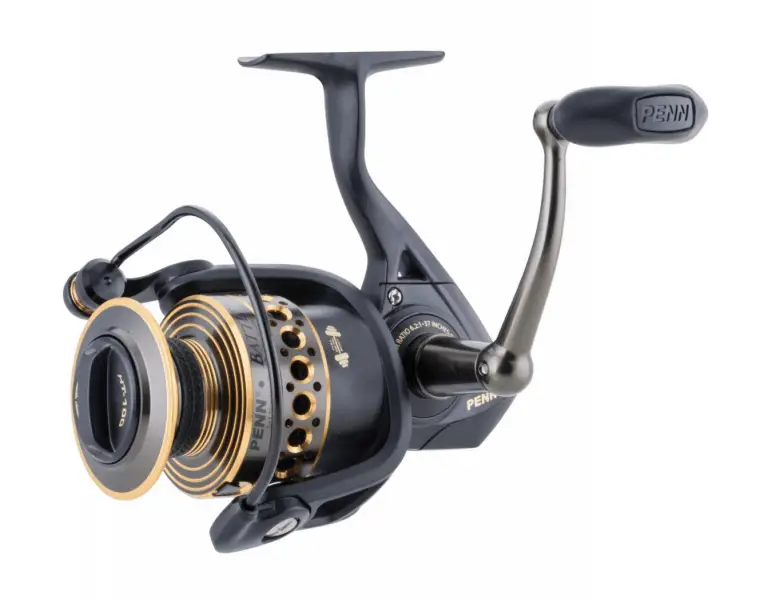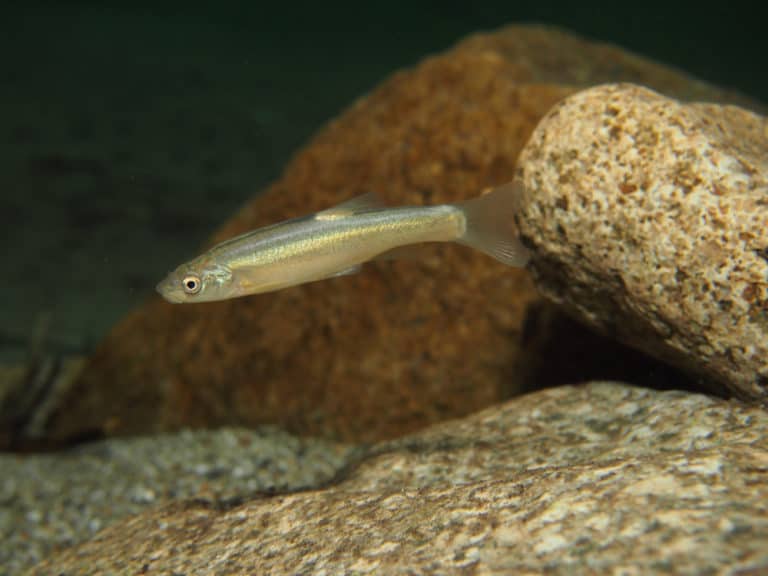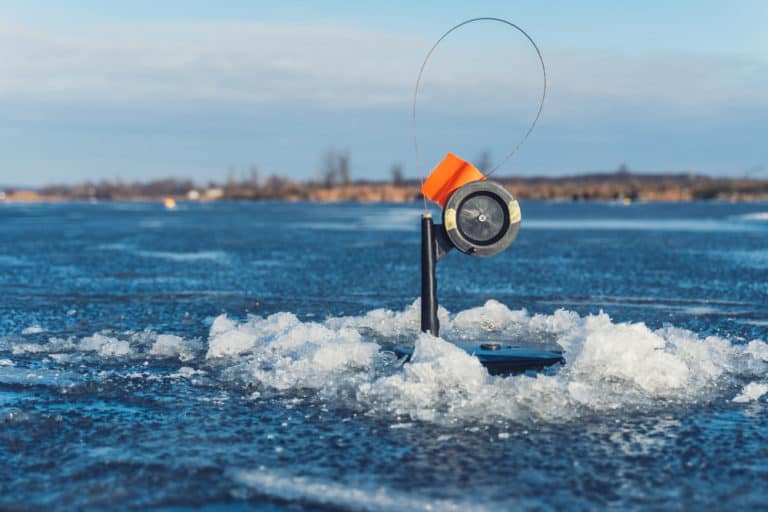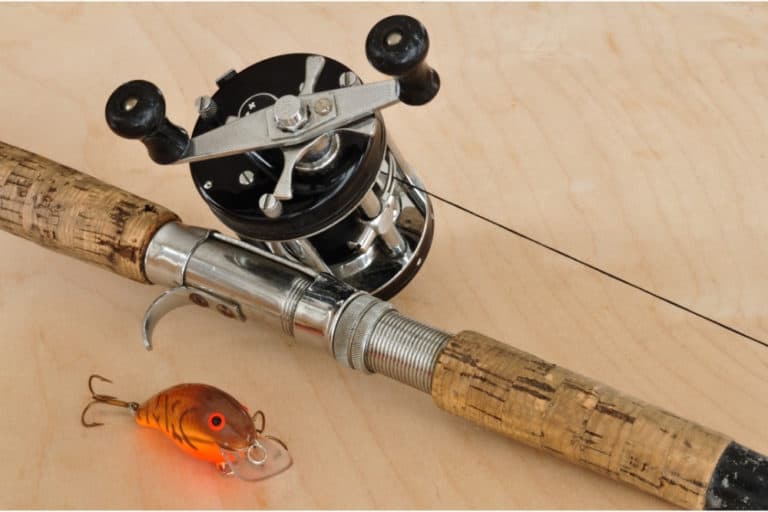How To Adjust A Baitcaster
To tune your baitcaster, you first need to be familiar with the parts of your baitcaster that you will be using. First up, the tension knob, which is located on the side of your reel. Its job is to adjust the spool, so it’s tighter or looser.
Next, take a look at your brake system; you will have brake controls, centrifugal brakes, and pin brake controls. There are different brakes depending on the make of the baitcaster, so check what yours has beforehand!
Press or decompress the button on the side plate to turn it. The side plate will pop off, and you can adjust the brake settings to your desired tightness. Usually, there is a dial that you can adjust.
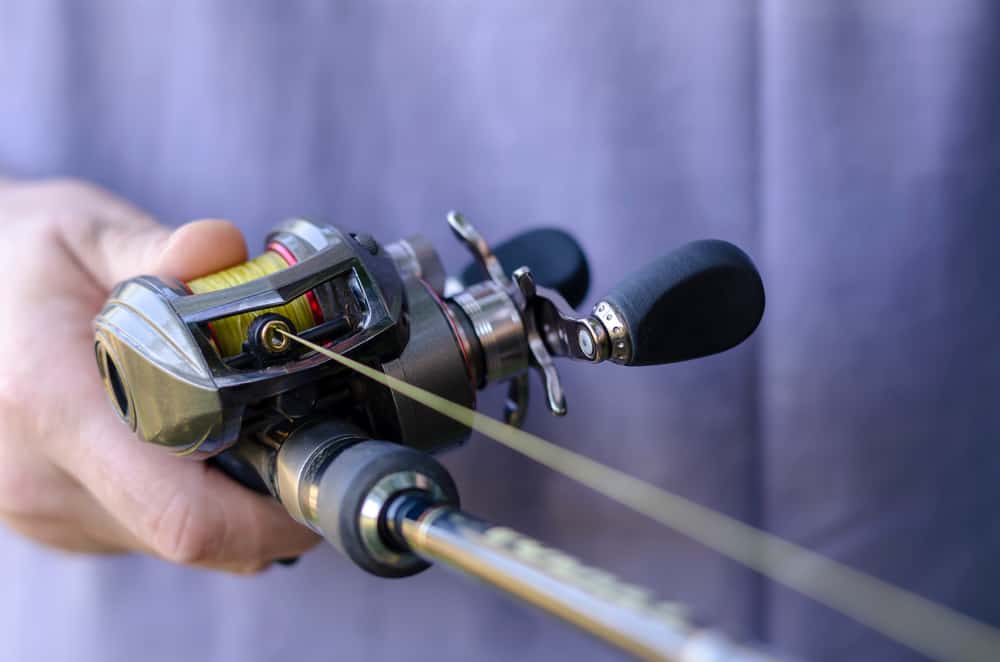
For magnetic brakes, you will want to adjust them with dials, usually on the sides. For beginners, use higher settings like 8 or 10.
These will be more comfortable when casting and shouldn’t feel loose. Then you press the button to release the spool; that’s all there is to it!
You will need to tune your reel with each lure as they all have different weights. To tune your reel, adjust your brake system and tension, as we mentioned earlier.
It’s a bit of trial and error at the start finding the right tension for the weight, but this does get easier with time!
If you aren’t sure, you can ask other fishers nearby or pop into your local store for advice. As each reel is different, it’s hard to give a one-answer-fits-all solution, but in-store you might find experts in the reel you have that can offer you tailored advice!
How do you fine-tune a baitcaster?
Fine-tuning your baitcaster is similar to tuning it, but here we are focusing on preventing bird nests! You will need to know the basics of your baitcaster, as we mentioned earlier. Check that your tension is tight enough that your reel doesn’t wobble.
You will want to adjust your brake settings so that the reel is as tight as possible for the lure you are attaching. As we mentioned earlier, the weight of each lure varies, so there might be some trial and error at this point.
Don’t be disheartened, though, and remember to seek advice if you are struggling!
Fine-tuning a baitcaster is all about ensuring the tension is correct for the lure; otherwise, you can encounter birds nest, where your reel will be spinning too fast, and you can experience a lot of backlash, which can be painful.
Take your time when fine-tuning your baitcaster; there’s no need to rush at all. Instead, focus on adjusting the settings and ensuring that it’s right for your lure.
Often, we recommend beginners use the higher settings. The reel will be tighter and allow for more control as you get used to using the baitcaster. Over time, you can play with this more.
How do you adjust a baitcasting reel for beginners?
To adjust your baitcasting reel, you will need to adjust the brake and tension, just like when you tune it. Three types can be on any baitcaster, and you must adjust them accordingly.
You can adjust the baitcasting reel using spool tension knobs, magnetic brakes, or a centrifugal braking system. These vary from reel to reel, so check what yours has before beginning.
Let’s start with the spool tension knobs. These vary in appearance depending on the reel you have but are usually on the side of your baitcaster. As you adjust the dial or knob by turning it, it will click.
To adjust it, turn the dial until you hit the desired setting. For beginners, it’s best to use one of the highest settings. It keeps your line nice and tight and prevents birds’ nests from happening, and should reduce the backlash you get when casting your line.
Next, set your brake to the highest setting too. Check which brake system you have before doing this, as they are all slightly different. Regardless of the type, you will want it on the highest setting again. It helps keep the rod nice and tight and makes casting your line even easier!
To finish, attach a lure to your line. Make sure the weight is appropriate for your line and rod. Once this is done, the baitcasting reel will be adjusted, and you are ready to cast your line into the water.
If you are unsure what the weight is, you can check on the packaging or pop to a local store for some advice.
Make use of online tutorials and forums too. These spaces are packed full of knowledge that beginners will find useful!
What is the dial on the side of a baitcaster?
The dial on the side of your baitcaster is your tension knob. It’s usually the small dial that you see on the side plate. You use the dial to set the precast adjustment, allowing you to enjoy a smooth cast of your line.
So how does it work? The spool tension knob provides tension to the spool; it allows it to spin or prevent it from spinning, depending on your adjustment.
You will need to adjust the dial every time you tie new lures, and how to do this can vary slightly depending on the baitcaster you have.
Generally though, before you set, hold it at a 10 or 2 o’clock angle. You can reel the lure up until 8-12-inches of the lines out of form.
Tighten the knob to your desired tension; you should feel some light pressure when you do this. You can push the thumb bar then let the lure go slowly to the ground.
You can move it back with a click and shake it softly to lure the drop from the tip of the rod. Then your tension will be set and help prevent overrun when you are casting your line too.
You can always adjust your tension again using this method. It might vary slightly depending on your baitcaster, so be sure to check the instruction manual or search for tutorials online that can assist you further.


